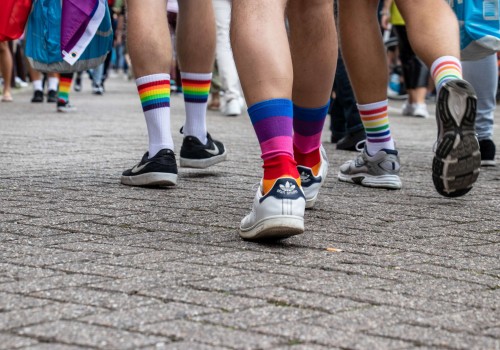7 suggested readings on sexual diversity


Good communication is key to having successful discussions with your child about topics such as sexuality. But there are many factors that can interfere with our good intentions during these discussions. We may have doubts about our own knowledge on the subject. Or it may just not be an issue we are comfortable with.
The easy way to talk about sexuality
It may seem daunting at times to discuss topics such as sexual orientation, gender identity, or gender expression with your teen. There are a number of tools that can help introduce these topics in conversation. A variety of books, novels, and comics address these topics and make it easier for you to talk about them.
Reading for teens:
- Blue, by Kiriko Nananan and Casterman, is a manga for 14–15-year-olds, in which love and friendship merge;
- Ciel Tome 1 and 2, by Sophie Labelle, is the story of a young transgender teenager who, when she enters high school, experiences several adventures
- Call me Nathan, by Catherine Castro, is a graphic novel that illustrates the story of a trans person and documents their questioning and the changes they experience; it is a fictional book that represents real life
- Souffler dans la cassette, by Jonathan Bécotte, is a poetic novel that depicts the close friendship shared by two young elementary school boys over the course of a summer
Reading for parents of teenagers
- In the Buff! Le dictionnaire bienveillant de la sexualité, by Myriam Daguzan Bernier, is a dictionary on sexuality, which deals with identity, love relationships, and self-image, in a light-hearted way
- Modèles recherchés : l'homosexualité et la bisexualité racontées autrement by Robert Pilon and Guy St-Jean is a collection of testimonials. The organization Gris Montréal uses it, among other tools, to promote a positive culture of coming out
- Adolescence Lesbienne, by Christine Lebreton, is an essay written following qualitative research conducted among lesbians ages 15 to 25.
If your child is questioning their sexuality and wants to talk to you about it, the key is to be open, accepting, and willing to listen.
Small glossary
Here is a small glossary that you can refer to during your reading. It will help you and your teen understand the vocabulary used in the materials you read. It will also help you feel more confident and comfortable with these various realities.
-
Sex at birth refers to the sex assigned to an individual at birth as a result of the observed external genitalia.
-
Gender is a continuum of self-identification in terms of feeling male, female, or non-binary for example.
-
Gender identity refers to the gender that a person identifies with regardless of the sex assigned at birth. It is an inner and personal feeling. As such, only the individual can assert their gender and this identity can be fluid.
-
Gender fluidity or gender creativity is a person who has flexibility or variation in their gender identity or gender expression.
-
Gender expression is the expression of observable characteristics based on what is considered feminine or masculine by society, such as physical appearance, hairstyle, language, clothing, mannerisms, etc. Gender expression can also help a person express their identity, but it may not be consistent.
-
Sexual orientation refers to a person's sexual preference for others.
-
Romantic orientation is a person's love attraction to others. Note that sexual orientation may or may not be the same as romantic orientation. For example, this is the case for a person who is heteromantic and bisexual. This person might have sexual relations with men and women, but only fall in love with people of the opposite sex.
-
Heteronormativity considers heterosexual orientation to be the norm, implying that other orientations are more marginal. However, all orientations are valid and equal. In other words, it means assuming that people are heterosexual by default. For example, it is possible to observe in most movies, shows, and books that heterosexuality is emphasized, while in reality there is a great deal of diversity that could be better represented.
-
A cisgender person is one for whom their assigned sex at birth corresponds to the gender with which they identify.
-
To misgender a person is to use a pronoun (such as he, she, it, etc.) that does not correspond to their gender identity.
-
Binary means that there are only two genders: women and men.
Gender fluidity or gender creativity is a person who has flexibility or variation in their gender identity or gender expression.
Entertaining and educating oneself in an inclusive manner
It can be challenging and uncomfortable to talk about sexuality, but the important thing is to be willing to engage in the discussion.
Keep in mind that all identities are valid and that your child only wants your support. It's normal not to have all the answers. Don't worry, just go at your child's pace and you're on your way!
*Note that the use of the words men and women are meant to be inclusive of trans people.








